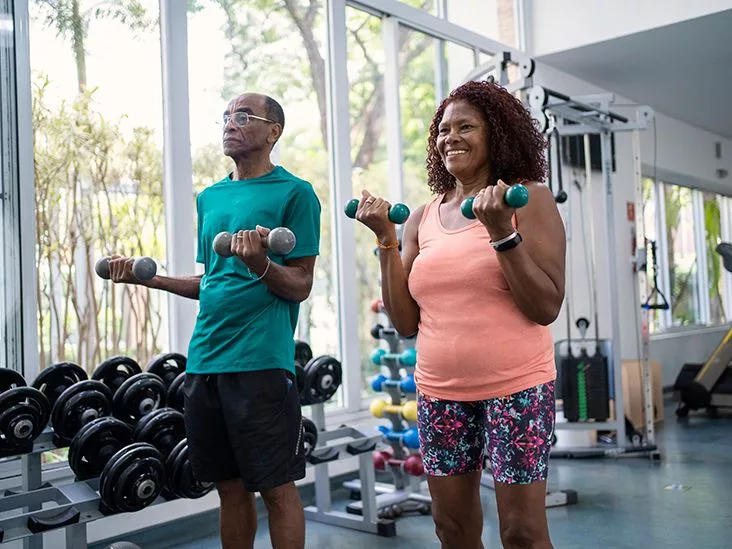You’ve finally decided to walk into a gym for the first time. Exciting? Absolutely. A little intimidating? Yeah, that’s totally normal. Below you’ll find the exact roadmap that turns that nervous energy into gym confidence—no fluff, just the stuff you can start using right now.
Think of this as a chat over coffee with a friend who’s already been through the whole “first‑day‑at‑the‑gym” scramble. I’ll share the stuff that helped me, sprinkle in a few real‑world stories, and keep the tone friendly enough that you’ll feel ready to hit the locker room without second‑guessing yourself.
Choosing Your Gym
Before you even step through the door, you need a gym that fits your life. The right location, vibe, and membership model can make the difference between a habit and a hassle.
Location, Hours, and Atmosphere
Pick a place that’s on your commute or close to a daily habit (like after work or on the way home from school). If the gym is a 15‑minute drive, you’ll be more inclined to skip it. Look at the opening hours—ideally, it stays open early enough for a pre‑work session or late enough for an evening workout.
The atmosphere matters, too. Some gyms are all about high‑intensity classes, others focus on weight‑lifting. Walk in for a quick tour and notice how members interact. Do you feel welcomed, or do you sense a “gym‑rat” vibe? GoFit’s beginner guide suggests trying a trial pass before committing.
Membership Models
Gyms usually offer three options:
- Month‑to‑month – No long‑term contract, perfect if you’re still testing the waters.
- Annual contracts – Lower monthly cost but lock you in.
- Class‑based memberships – Great if you love group workouts and need that structured schedule.
Read the fine print for hidden fees like initiation charges or cancellation penalties. A clear, honest contract signals a trustworthy gym.
What to Pack (Gym‑Bag Checklist)
Here’s a quick list that keeps you from scrambling for forgotten items:
- Reusable water bottle
- Comfortable training shoes (clean, snug, supportive)
- Micro‑fiber towel (for wiping equipment)
- Small lock for a locker
- Phone (silenced) and headphones (one earbud max)
- Optional: a light snack (protein bar, banana) for post‑workout refuel
The Gym Group checklist also recommends a shower kit if you plan to freshen up before heading home.
Gym Etiquette Basics
Good etiquette keeps the gym a welcoming place for everyone—including you. Think of it as the unwritten rulebook that says, “I respect your space, you respect mine.”
Top 10 Unwritten Rules
- Wipe down equipment after each use – the GoFit guide highlights this as the single most‑appreciated habit.
- Re‑rack your weights – never leave plates scattered on the floor.
- Don’t hog machines – aim for 30‑minute slots during peak hours.
- Keep noise low – use a single earbud, no loud phone calls.
- Respect personal space – give at least an arm’s length around someone on a bench.
- Use a towel on benches and seats.
- Ask before using someone’s equipment – a simple “Is this free?” goes a long way.
- Return mats and accessories to their rack.
- Stay focused – avoid scrolling through social media while on a machine.
- Be encouraging – a nod or smile can boost someone’s confidence.
How to Ask for Help
If a machine looks like a medieval torture device, just ask. A friendly “Excuse me, could you show me how this works?” is perfectly okay. Trainers love to help newbies; Fitbod’s study shows that beginners who ask questions stay longer and see faster progress.
Understanding Gym Machines
Machines are the perfect place to start because they guide you through a safe range of motion. Below is a quick tour of the most common zones you’ll encounter.
Gym Layout Overview
- Cardio Zone – treadmills, stationary bikes, rowing machines.
- Strength Area – dumbbells, barbells, plate‑loaded machines.
- Functional Space – kettlebells, TRX straps, resistance bands.
These sections are usually clearly labeled; follow the signs and you’ll never feel lost.
Beginner‑Friendly Machines
| Machine | Primary Muscles | Setup Steps | Common Mistakes to Avoid |
|---|---|---|---|
| Leg Press | Quads, Glutes, Hamstrings | 1️⃣ Adjust seat, 2️⃣ Set weight, 3️⃣ Plant feet shoulder‑width, 4️⃣ Push through heels | Don’t lock knees completely; keep them slightly bent at the top. |
| Seated Row | Upper Back, Biceps | 1️⃣ Sit with chest upright, 2️⃣ Grip handles, 3️⃣ Pull to torso, 4️⃣ Squeeze shoulder blades | Avoid hunching shoulders; keep torso stable. |
| Chest Press | Pectorals, Triceps | 1️⃣ Adjust seat height, 2️⃣ Grip handles, 3️⃣ Press forward, 4️⃣ Control return | Don’t let elbows flare too wide; maintain a 45° angle. |
| Lat Pulldown | Latissimus Dorsi, Biceps | 1️⃣ Select appropriate weight, 2️⃣ Grip bar wider than shoulders, 3️⃣ Pull to chest, 4️⃣ Slowly release | Don’t lean back excessively; keep torso upright. |
Mastering these machines builds a solid foundation before you graduate to free weights.
Transitioning to Free Weights
You’re ready for dumbbells and barbells when you can execute the above machines with perfect form and feel comfortable with a 5–10 kg load. Start with these basic moves:
- Goblet squat (dumbbell)
- Dumbbell bench press
- Romanian deadlift (light bar)
Keep the weight light, focus on technique, and you’ll never risk injury.
First-Day Workout Plan
Now that you know where to go and how to behave, let’s talk about what to actually do inside the gym. This full‑body circuit keeps things simple, balanced, and effective.
Warm‑Up (5–10 minutes)
Start with a light cardio burst—treadmill walk at 4–6 km/h for five minutes. Follow with dynamic stretches:
- 10 forward arm circles
- 10 backward arm circles
- 10 side lateral raises
- 15‑second wall stretch each arm
Dynamic movements raise your heart rate, increase blood flow, and prime muscles for heavier work.
Full‑Body Beginner Circuit
Perform three sets of 10‑12 repetitions for each exercise. Rest 60 seconds between sets.
- Leg Press – builds a solid lower‑body base.
- Seated Row – balances push‑pull forces for posture.
- Chest Press – strengthens the pushing muscles.
- Lat Pulldown – complements the row for a full back.
- Cable Triceps Push‑Down – tones the “guns”.
- Plank – hold 30 seconds; core stability for every lift.
If you’re unsure about form, ask a trainer for a quick demo. Most gyms offer a complimentary 15‑minute session for newbies.
Cool‑Down (5 minutes)
Finish with static stretches targeting the muscles you just worked. Hold each stretch for 20‑30 seconds and breathe deeply. This reduces soreness and signals your body to transition into recovery mode.
Post‑Workout Nutrition
Within 30–60 minutes, aim for 20‑30 g of protein plus some carbs. A Greek‑yogurt parfait, a protein shake with a banana, or a turkey wrap all fit the bill. The Gym Group emphasizes that refueling promptly helps muscle repair and restores energy levels.
Building Gym Confidence
Confidence isn’t something you “have” or “don’t have”; it’s a skill you train, just like any lift.
12‑Workouts‑In‑30‑Days Challenge
Fitbod’s research shows that committing to 12 sessions in a month transforms a sporadic habit into a routine. Mark a calendar, set reminders, and celebrate each completed workout. Small wins add up to big confidence.
Tracking Progress Without Obsession
Use a simple log: date, exercise, weight used, and a short note on how you felt. Apps like GoFit and the Gym Group’s own tracker make this painless. Seeing progress on paper (or screen) reinforces your belief that you belong there.
Overcoming Social Anxiety
Gym anxiety is real—Verywellmind notes that people with social anxiety often fear judgment. Here are three tricks that help:
- Focus on your breath – inhale for three counts, exhale for three. It grounds you.
- Pick a “quiet corner” during peak hours where fewer people are around.
- Bring a friend – having a workout buddy turns the experience into a shared adventure.
Remember, everyone is on their own journey; most gym‑goers are too busy counting reps to notice you.
Common Pitfalls to Avoid
Even the most enthusiastic beginners can stumble if they ignore a few key warnings.
Doing Too Much, Too Soon
Fitbod advises beginners to stop just shy of failure for the first two weeks. Over‑loading leads to sore muscles, potential injuries, and a demotivating “I can’t do this” mindset.
Skipping Warm‑Ups or Cool‑Downs
Skipping the warm‑up reduces blood flow and increases injury risk. Skipping the cool‑down prolongs soreness. Treat both as non‑negotiable parts of your session.
Neglecting Proper Form
Bad technique locks in bad habits. If possible, schedule an introductory session with a certified trainer—BarBend highlights that professional guidance can accelerate results by up to 30%.
Expert Resources
For deeper dives, check out these reputable sources (they’re all linked within the article already):
- GoFit’s Beginner’s Guide – detailed equipment tour and etiquette checklist.
- BarBend’s comprehensive roadmap for new gym members.
- Fitbod’s evidence‑based blog on avoiding common mistakes.
- Verywellmind’s research on gym‑related social anxiety.
- The Gym Group’s practical pre‑ and post‑workout nutrition tips.
Conclusion
Starting a gym habit is less about perfect lifts and more about building a sustainable routine. Choose a gym that feels right, respect the etiquette, master a handful of friendly machines, follow the simple full‑body circuit, and celebrate every small victory. In a month, you’ll notice not only stronger muscles but also a calmer mind and genuine confidence.
Ready to walk in tomorrow? Grab your bag, hit that “Start Workout” button in your favorite app, and remember: every seasoned athlete was once a beginner just like you. If you have questions, drop a comment below—let’s keep the conversation going and help each other stay on track!


















Leave a Reply
You must be logged in to post a comment.